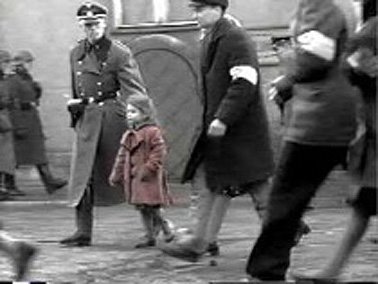Here is an announcement we sent around today:
The Chinese/American Association for Poetry and Poetics (CAAP), initiated by Marjorie Perloff, Charles Bernstein, and Nie Zhenzhao, was established in January 2008 with its headquarters at Center for Programs in Contemporary Writing (CPCW), University of Pennsylvania, USA.

This is an international academic organization devoted to the study of poetry and poetics, focusing on the scholarship and translation of international poetry, with special emphasis on the study and translation of North American poetry in China and Chinese poetry in North America, but also with a commitment to see North American poetry and Chinese poetry in a global context. The association will endeavor to introduce American and Western poetry and poetics to China so as to produce new energy for Chinese poetry and its study, and to introduce Chinese poetry and poetics to America and the world. Attention will also be paid to the scholarship and translation of philosophical approaches to poetry and translation so as to promote the study of poetry and poetics in the context of literary studies.
A non-profit organization, CAAP is composed of scholars and poets of America, China and other parts of the world. It is chaired by Marjorie Perloff, professor emerita at Stanford University and former president of the Modern Language Association of America and American Association of Comparative Literature. Charles Bernstein, professor of University of Pennsylvania and fellow of American Academy of Arts and Sciences, and Nie Zhenzhao, professor of Central China Normal University, vice president of the China National Association of Foreign Literature and chief editor of Foreign Literature Studies (FLS), an AHCI source journal, serve as vice presidents. The current association board is composed of the American and Chinese scholars and poets (See below).
CAAP will sponsor academic activities such as scholarly conferences, exchanges of scholars, translation, and publication. All scholars and poets who share the interests of this Association are warmly welcome to join. The email address is caap2008@gmail.com.
President: Marjorie Perloff
Vice Presidents: Charles Bernstein
Nie Zhenzhao
Executive director: Luo Lianggong
Members of CAAP Board:
Dong, Hongchuan Sichuan International Studies University, China
Er, Zhang Evergreen College, USA
Filreis, Al University of Pennsylvania, USA
Hu, Sishe Xi’an International Studies University, China
Huang, Yunte University of California at Santa Barbara, USA
Jiang, Hongxin Hunan Normal University, China
Li, Zhimin Guangzhou University, China
Lin, Tan New Jersey City University, USA
Liu, Jianjun Northeast Normal University, China
Luo, Lianggong Wuhan University of Technology, China
Luo, Yimin Southwest Normal University, China
Ma, Ming-Qian State University of New York at Buffalo, USA
Ning, Yizhong Beijing Language and Culture University, China
Ou, Hong Sun Yat-sen University, China
Qian, Zhaoming University of New Orleans, USA
Saussy, Haun Yale University, USA
Schwartz, Leonard Evergreen College, USA
Slaymaker, Doug University of Kentucky, USA
Sun, Jian Fudan University, China
Twitchell, Jeff Overseas Family College, Singapore
Yang, Jincai Nanjing University, China
Yeh, Michelle University of California at Davis, USA
Yin, Qiping Zhejiang University, China
Yu, Tim University of Toronto, Canada
























































 "I teach horizontally, meaning that while I might begin with a fixed idea of what I'm going to teach that day, I let it drift rhizomatically way off topic, often pulling it back when it gets too far. I rely on non-fixed materials to teach this way; the whole world is at my fingertips. Should I go off on a tangent about John and Rauschenberg and their love relationship as expressed in Rauschenberg's bed, an image of that bed is always a click away. From there, we can head anywhere into the non-fixed universe, be it film, text or sound. And of course, that always takes us elsewhere. As Cage says, 'We are getting nowhere fast.'"
"I teach horizontally, meaning that while I might begin with a fixed idea of what I'm going to teach that day, I let it drift rhizomatically way off topic, often pulling it back when it gets too far. I rely on non-fixed materials to teach this way; the whole world is at my fingertips. Should I go off on a tangent about John and Rauschenberg and their love relationship as expressed in Rauschenberg's bed, an image of that bed is always a click away. From there, we can head anywhere into the non-fixed universe, be it film, text or sound. And of course, that always takes us elsewhere. As Cage says, 'We are getting nowhere fast.'" 

 that anyone has yet got the imaginative measure of that terrifying day six years ago. Certainly our Tolstoy has not crawled out of the rubble. The closest we have, Don DeLillo, succeeded as an essayist-journalist ("In the Ruins of the Future: Reflections on Terror and Loss in the Shadow of September,” Harper’s, December 2001) but, to my mind, failed as a novelist ("Falling Man"). One reason, perhaps, is that the remembered emotion was instantly buried under a pile of cultural junk.' - Tod Gitlin in his review of Susan Faludi's The Terror Dream (written for
that anyone has yet got the imaginative measure of that terrifying day six years ago. Certainly our Tolstoy has not crawled out of the rubble. The closest we have, Don DeLillo, succeeded as an essayist-journalist ("In the Ruins of the Future: Reflections on Terror and Loss in the Shadow of September,” Harper’s, December 2001) but, to my mind, failed as a novelist ("Falling Man"). One reason, perhaps, is that the remembered emotion was instantly buried under a pile of cultural junk.' - Tod Gitlin in his review of Susan Faludi's The Terror Dream (written for 






























